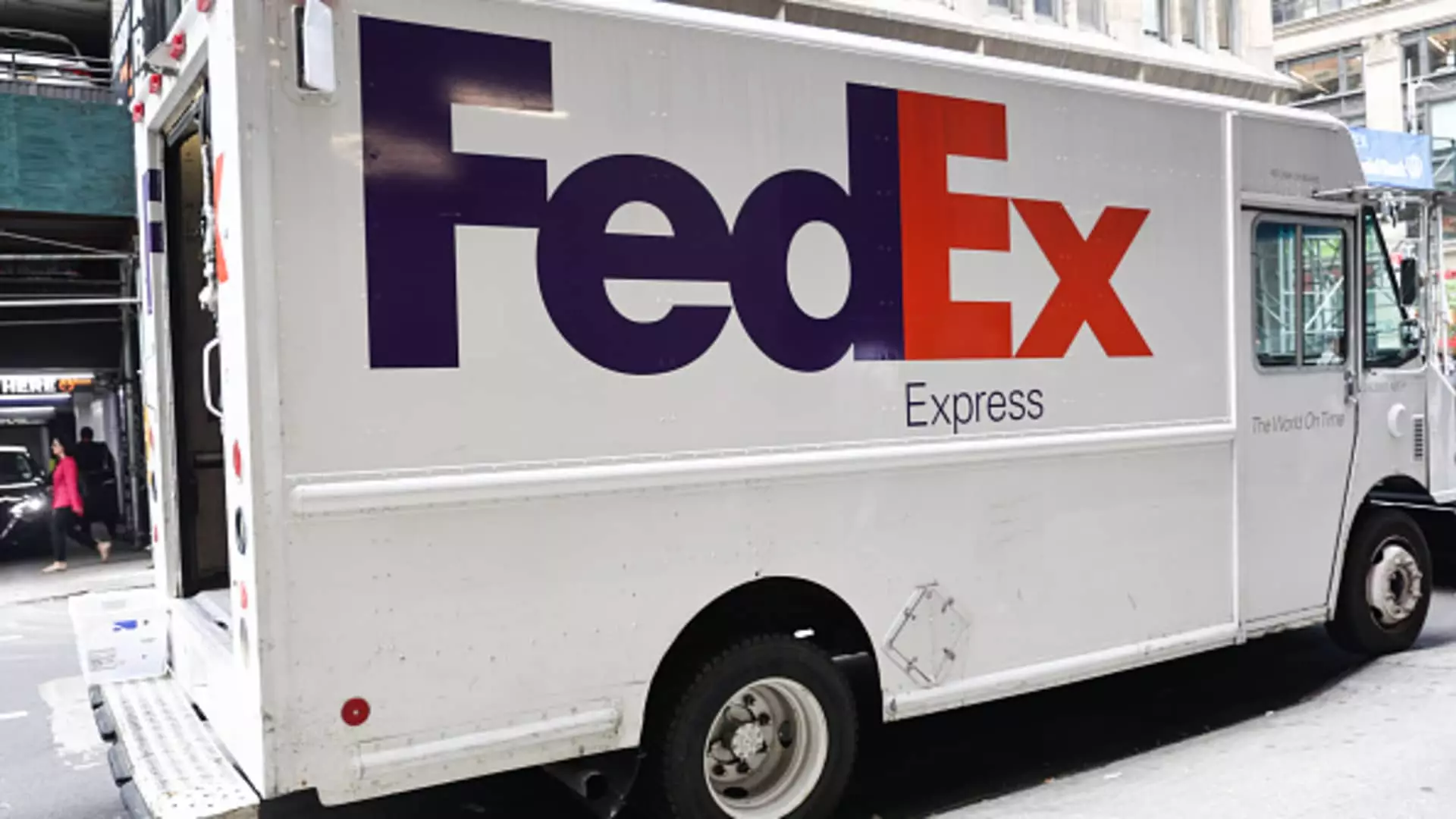Just how fragile can corporate resilience be in the face of economic headwinds? FedEx’s recent decision to slash its earnings guidance by over 8% has sent tremors through the stock market, igniting questions about its leadership and foresight. The once-revered juggernaut of parcel delivery has now thrown in the towel, declaring an expectation of earnings per share between $18 and $18.60, lower than its earlier projection. While many in the business world treasure predictive analysis and strategic planning as sacred, FedEx’s shocking retreat reveals a reliance on outdated models in a rapidly evolving landscape dominated by uncertainties.
The Domino Effect of Economic Weakness
The repercussions of FedEx’s forecast did not remain isolated. United Parcel Service (UPS), predictably, saw a 1.5% dip as the market’s collective anxiety took hold. This situation exemplifies the plant’s fragile interconnectedness, whereby the struggles of one entity ripple through the entire sector. Are we witnessing the dawn of a shipping industry reckoning where legacy companies stumble while nimble start-ups potentially thrive? One must question whether corporate legacy truly offsets the relentless march of innovation, especially in an era dictated by consumer adaptation rather than corporate inertia.
Steel Industry Shake-Up Sparks Concern
Cleveland-Cliffs’ decision to idle two factories due to weak market demand is indicative of a deeper malaise affecting the steel industry, exacerbated by political turmoil and consumer unpredictability. Hundreds of job cuts translate not just into economic loss but, crucially, drain morale and community stability. The uncertainty tied directly to tariff policies reflects a disjointed approach to commerce and governance that places unnecessary risk on American workers and businesses alike. Perhaps it is time to reconsider the foundation upon which these trade policies stand; we must prioritize stability over reactive measures that serve to deepen economic divides.
Nike: When Victory Becomes a Liability
Nike, an emblem of athletic ambition, also falters amid troubling sales forecasts, leading to a nearly 7% drop in shares. What does this signal for consumer confidence in the iconic brand? While its quarterly figures flirted with optimism, the overwhelming admission of expected sales declines casts a long shadow. It raises a pivotal inquiry: has the relentless pursuit of market expansion diluted the authenticity of what made Nike a household name in the first place? The risk of financial success leading to complacency cannot be overlooked, serving as a critical lesson for companies riding the wave of consumer loyalty.
The Semiconductor Strain: Micron’s Surprising Decline
Even in sectors deemed resilient, like semiconductors, we are witnessing declines that defy expectations. Micron Technology reported an earnings beat of $1.56 per share, yet its stock still reflected a decline of almost 4%. Analyst expectations are no longer the only measure of success; investor sentiment now weighs heavily on how companies navigate uncertainty. Accountability runs deeper than performance metrics; it includes a proactive stance on market dynamics, ultimately shaping how investors regard strategic adaptability in future projections.
The unfolding narrative within the business world indicates that complacency breeds vulnerability. Companies cannot afford to hoist their sails unaware of the shifting winds; a clearer vision and agile strategy must replace the reliance on historical success. The landscape continues to evolve, and those who disregard its complexities will find themselves grappling with the consequences of miscalculation.

